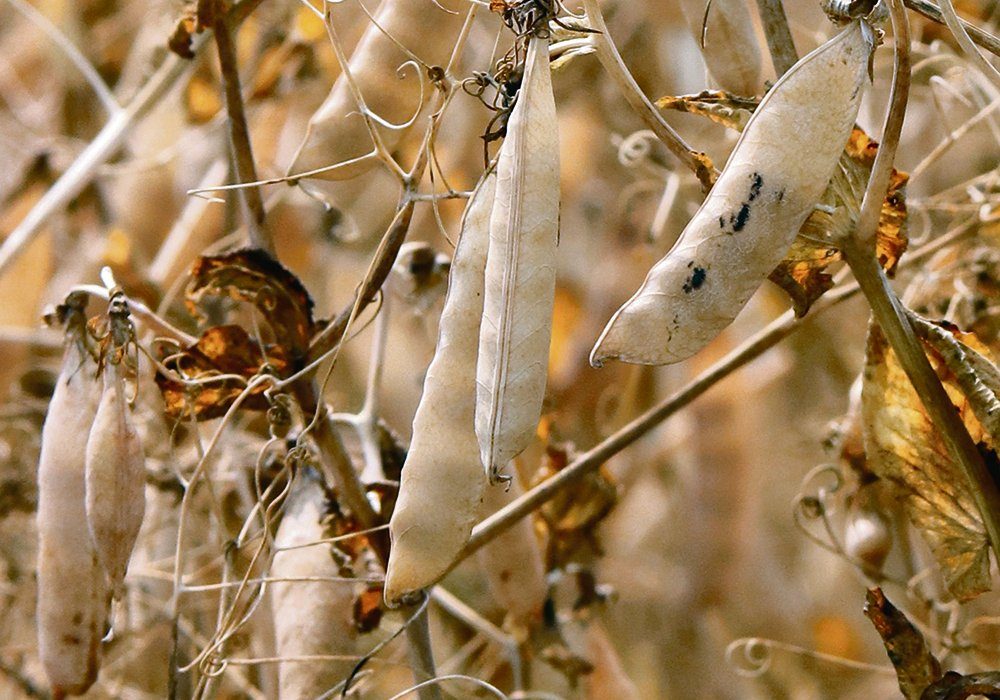Rising food inflation could boost pea demand

Pea demand could benefit from rising food price inflation around the world, says a pulse industry analyst.
The food price index compiled by the United Nations’ Food and Agriculture Organization is 31 percent higher than it was this time last year, led by rising vegetable oil and meat prices.
That could push some demand to pulses, especially peas, which are the cheapest pulse, said Marlene Boersch, managing partner of Mercantile Consulting Venture.
“This is my premise — the demand side is actually going to be supported by this, which runs contrary to some of the major commodities,” she told delegates attending the Global Pulse Confederation’s Pulses 2.1 virtual conference.
She also sees continued strong feed use for the commodity. Swine feed production in China was up 60 percent from year-ago levels in the first quarter of 2021.
Peas remain a price competitive feed ingredient in that market and around the world because of tightening corn and soybean meal supplies.
It all adds up to a strong demand pull for the commodity in 2021-22.
All eyes are on the Indian market, where the country’s desi chickpea crop is forecast at 8.5 to nine million tonnes, which is well below the government’s target of 11.6 million tonnes.
Desi production is also down in Pakistan. She estimated it at 125,000 tonnes compared to 500,000 tonnes last year.
Yellow peas are used as a substitute for desi chickpeas in some dishes in those countries.
Brajesh Panda, a trader with Agrocorp, said India’s pea import restrictions were implemented to help prop up desi chickpea prices.
However, the policy has been an abject failure because desi prices are still below the government’s minimum support price, even in a year like this when the crop was a bitter disappointment.
Meanwhile, yellow pea prices in India have ballooned to US$750 per tonne and green pea prices have topped $1,200 per tonne.
“The consumer is suffering,” he said.
Panda said pea imports in neighboring countries are soaring, implying there is some black market activity in the crop.
Nepal used to import about 40,000 tonnes of peas a year. In 2020-21 it will import 1.4 million tonnes of the crop. Bangladesh’s purchases have jumped to 700,000 to 750,000 tonnes, up from 600,000 tonnes.
Boersch is forecasting 12.6 million tonnes of Canadian pea production, a six percent decline from last year. It will be comprised of 8.47 million tonnes of yellow peas and 4.13 million tonnes of greens.
Ending stocks for 2021-22 are forecast at a paltry 150,000 to 200,000 tonnes.
Recent rainfall vastly improved production prospects in Alberta and Saskatchewan, but it is still very dry in Manitoba.
She warned importers about the growing fractionation market in Canada, which will consume an estimated 365,000 tonnes of the crop this year.
David Chen, a trader with Bonagro, said Chinese demand will remain strong. The country imported 980,000 tonnes of the crop in the January through April 2021 period, a 29 percent increase over the previous year.
Canada accounted for 94 percent of those peas, which is down from 99 percent a year ago.
Onur Vatan, a trader with Sintez Group, expects Ukraine to produce 500,000 tonnes of yellow peas, and there will be another 30,000 tonnes of carryout from 2020-21.
He believes China is a couple months away from approving Ukrainian peas for import.
Denis Plenkin, a trader with Agropa Trading, said Kazakhstan has abandoned peas in favour of growing oilseeds.
The European Union is the main buyer of Black Sea peas, followed by Pakistan and Turkey.
Plenkin is “really bullish” Black Sea pea prices despite what he expects will be a 100,000 tonne increase in Russian production and a 100,000 to 150,000 tonne increase in Ukraine.
However, he said that harvest will be delayed by about one month, starting around the end of July.
Hadi Doni, a trader with Doni & Company, said Pakistan is buying Black Sea yellow peas because they are $20 to $25 per tonne cheaper than Canadian product. The $5 per tonne premium for selling Canadian peas doesn’t make up for that difference.
Many of the panelists talked about soaring freight costs. Plenkin said the cost of shipping peas from the Black Sea to Karachi have doubled, and that is assuming you can find a container to ship them in.
Contact sean.pratt@producer.com
Source: producer.com

